When you think about sculpture you often think of two or three-dimensional forms carved in traditional mediums of stone or wood or cast in metal or plaster. My medium of polymer clay is still considered the new kid on the block. It's classified as a clay but contains no natural occurring clay minerals - it's actually polyvinyl chloride (PVC), the same material as the pipes under your sink. First developed in the 1930's it didn't make an appearance in the arts and crafts market until the 1980's. Originally snubbed as a fine art medium, polymer clay can now be found in major museums and galleries around the world.
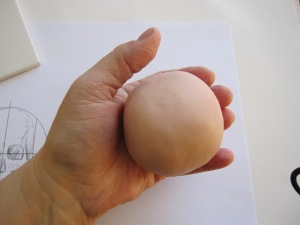 Polymer Clay is non-toxic and safe when used properly. It is a form of plastic and some people think of the term plasticizers and phthalates and naturally think of the health hazards associated with these chemicals. However in 2009 the US passed a law outlawing specific phthalates in children’s items. Because polymer clay is classified as a toy, the formulation was changed and phthalate esters were no longer used. Most polymer clay manufacturers had already switched to other plasticizers well before this date. Plasticizers are the chemical that is used to make a substance soft and pliable. Plastic is used in almost everything in our homes and offices and most plastics have plasticizers. Vinyl garden hoses, plastic dish ware and cutlery, your toothbrush, your shoes, even gum uses an edible version. But don't worry - today, modern plasticizers stay locked up inside plastic, making it safe.
Polymer Clay is non-toxic and safe when used properly. It is a form of plastic and some people think of the term plasticizers and phthalates and naturally think of the health hazards associated with these chemicals. However in 2009 the US passed a law outlawing specific phthalates in children’s items. Because polymer clay is classified as a toy, the formulation was changed and phthalate esters were no longer used. Most polymer clay manufacturers had already switched to other plasticizers well before this date. Plasticizers are the chemical that is used to make a substance soft and pliable. Plastic is used in almost everything in our homes and offices and most plastics have plasticizers. Vinyl garden hoses, plastic dish ware and cutlery, your toothbrush, your shoes, even gum uses an edible version. But don't worry - today, modern plasticizers stay locked up inside plastic, making it safe.
As with anything in life, it's a good idea to follow a few guidelines for the safest use of polymer clay. First of all don't eat it! As a matter of fact, don't eat anything that's not real food. Although it probably won't kill you, it's definitely not good for you. Don't eat off of it, either. Cured or uncured polymer clay should not come in contact with food in general. Cured polymer clay is too porous to be sufficiently cleaned which can be a breeding ground for bacteria. If you are using polymer clay to create pottery - remember - it is only for decorative display.
Use tools or equipment that is dedicated to working with polymer clay. There are many kitchen tools that work really well with polymer clay like rolling pins, food processors, pasta machines and cake decorating tools. Once you've used it with clay, keep it out of the kitchen.
Don't burn it! The temperature that it's baked at should never go above 275 degrees. If polymer clay is overheated enough or accidentally burned, the PVC will break down and release toxic fumes so it's important that your oven temperature is correct. An oven thermometer is all you need to ensure your temperature is accurate. As long as clay is baked at the correct temperature, there are no "fumes" to worry about. Never, ever use a microwave oven to bake polymer clay and don't use toaster ovens - the temperature fluctuates too much and the heat source is too close to the clay. You don't need a special oven, your regular kitchen oven is fine especially if you regularly clean it. It's okay to cure clay and bake food in the same oven, just not at the same time.
 There are so many things I love about this medium. It's an oil based product so it doesn't dry out. This means I can take my time working on a sculpture. I can create whimsical sculptures or add fine details for hyper realistic sculptures. I can play with skin tones and colours. It accepts paint. Once it's baked it's very strong. I can work in any size from miniature to life size. I've been classified as a Master Polymer Clay Artist, I guess mostly because I've been working with this medium for more than 20 years. My style and technique has improved and developed over the years. Some of my earlier work had a very primitive look, but with practice and persistance I've developed as a figurative artist. As per Malcolm Gladwell's book "Outliers", "You need to have practiced, to have apprenticed, for 10,000 hours before you get good." Even American rapper Macklemore wrote a hit song about it, rapping that "the greats weren't great because at birth they could paint, the greats were great because they paint a lot."
There are so many things I love about this medium. It's an oil based product so it doesn't dry out. This means I can take my time working on a sculpture. I can create whimsical sculptures or add fine details for hyper realistic sculptures. I can play with skin tones and colours. It accepts paint. Once it's baked it's very strong. I can work in any size from miniature to life size. I've been classified as a Master Polymer Clay Artist, I guess mostly because I've been working with this medium for more than 20 years. My style and technique has improved and developed over the years. Some of my earlier work had a very primitive look, but with practice and persistance I've developed as a figurative artist. As per Malcolm Gladwell's book "Outliers", "You need to have practiced, to have apprenticed, for 10,000 hours before you get good." Even American rapper Macklemore wrote a hit song about it, rapping that "the greats weren't great because at birth they could paint, the greats were great because they paint a lot."
If you are interested in learning more about polymer clay and trying your hand at sculpting, I offer several classes in polymer clay, from beginner to advanced. Polymer Clay is so versatile - many jewelry artists use it to make intricate beads and patterns. You can use it to create molds or for stamping projects, card making, creating figures, figurines, action figures, fantasy etc. It even has commercial applications and is used to make decorative parts for furniture, picture frames and more. The possibilities of polymer clay are still being explored and people are coming up with unique and creative ways to use this medium. For a full list of available workshops visit my website at www.saracinocollection.com
One last thing . . . in this day and age, plastics, polymers and resins are part of everyone's life, from our homes to our cars - from our clothes and personal products to our food containers. What is important is that we all take responsibility in how we use these products and how we dispose of them. Recycle . . . recylcle . . . recycle! Recycled plastic is now being used in innovative new ways like creating building blocks for the construction of homes.
Sources: https://thebluebottletree.com/polymer-clay-safe/
View Post
 The kids are home for the summer. Are you looking for things you can do together to keep them busy without defaulting to television and electronics? Or maybe a little something for you to do to get away from it all. How about art classes in polymer clay? Polymer Clay is an ideal medium for both kids and adults – it doesn’t dry out until you bake it – there’s no mess, and you don’t need any special equipment – just your regular kitchen oven. It’s non-toxic, easy to use and a lot of fun.
The kids are home for the summer. Are you looking for things you can do together to keep them busy without defaulting to television and electronics? Or maybe a little something for you to do to get away from it all. How about art classes in polymer clay? Polymer Clay is an ideal medium for both kids and adults – it doesn’t dry out until you bake it – there’s no mess, and you don’t need any special equipment – just your regular kitchen oven. It’s non-toxic, easy to use and a lot of fun.
 perfect example of artists who desire to be loved and to achieve their dreams.
perfect example of artists who desire to be loved and to achieve their dreams.

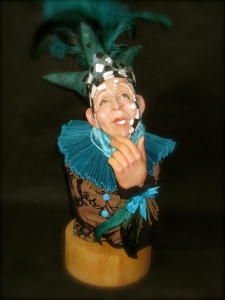
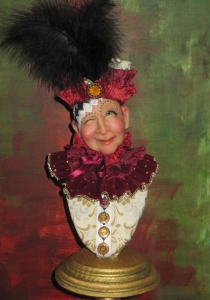
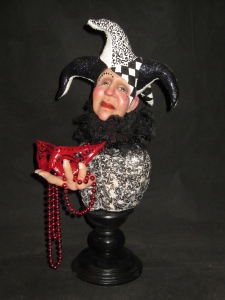
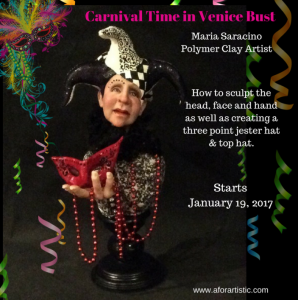







 portrature could have conceivably been called avant-garde—and yet the best portrait painters and sculptors are still highly sought after, charging massive sums, and commanding profound respect among the very wealthy. It’s a prolific segment of contemporary art that’s been hiding in plain sight for years.” James Tary, 2015 http://www.bloomberg.com
portrature could have conceivably been called avant-garde—and yet the best portrait painters and sculptors are still highly sought after, charging massive sums, and commanding profound respect among the very wealthy. It’s a prolific segment of contemporary art that’s been hiding in plain sight for years.” James Tary, 2015 http://www.bloomberg.com


